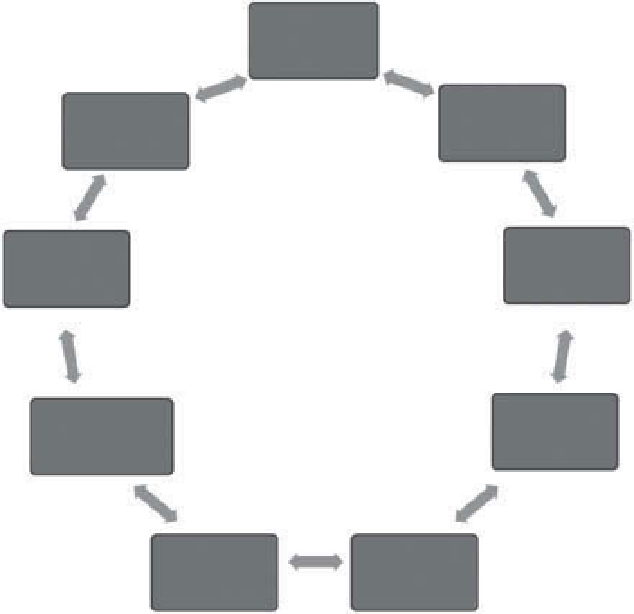Geoscience Reference
In-Depth Information
Self-organizing
& self-sustaining
Monitoring,
evaluation, &
stewardship
Systems
approach
Restoring
structure &
function
Planning for
disturbance
Employing
renewable
resources
Balancing
ecosystem-human
needs
Adaptive
management
Reflecting local
geography
Figure 13-5.
Schematic illustration of design principles for wetland restoration, enhancement and creation.
wetlands to mimic such conditions makes them
more resilient to threats. Resiliency allows an
ecosystem to maintain its critical functional char-
acteristics despite external natural or human-
induced stressors or disturbances. The focus on
restoring natural functional processes through
the bioengineering of hydrological patterns,
nutrient cycles, native l oral and faunal com-
munities, and dynamic erosion and deposition
processes could ensure such ecological integrity
(U.S. Environmental Protection Agency 2000).
Systems approach
- As explained in chapter
12, a systems approach is one that adopts a
holistic view, considering an ecosystem in its
entirety rather than as separate individual com-
ponent parts. In designing restored or newly
created wetlands, such an approach may more
effectively address interrelated processes and
functions and anticipate the impact of changes
made to one element of the system on other
areas.
Using a systems approach, design elements
may borrow and synthesize the most appropri-
ate elements and technologies from a wide
diversity of i elds including biology, chemistry,
ecology, engineering, hydrology and others. The
implementation of a restoration project hence
necessitates expertise from a wide variety of
i elds and from a range of stakeholders that may
each contribute to a unique understanding of a
system's functional and structural aspects. More-
over, adopting a systems approach makes it
possible to anticipate the response of a system
to changes implemented and, as such, could be
critical to long-term success.
Restoring structure and function
- Altera-
tions to the structure and morphological char-
acteristics of wetlands due to their conversion
to other land uses may affect ecological func-
tions. For example the draining of wetlands
in the American Midwest through agricultural
drainage tiles resulted in degraded wetland
habitats and changes to water-l ow regimes,
rendering these areas unsuitable for native
wetland biota. Restoration techniques focus on
re-engineering morphological site characteris-
tics, which may, in turn, help re-establish wetland
functional processes including hydrological





